farms: Pheasant / Beautifull, Exotic and Colorful Bird / Features - Habitat - Reproduction / NOT TO THE PHEASANT HUNTING
The birds are the result of the great work of God, each of them is a wonder of nature that surprises us with its beauty, majesty and its incredible mixture of colors. They are quite a spectacle! When we see some we can not stop admiring its beautiful multicolored plumage, some gestures that leave us impressed and even its incredible ability to take flight.

Source
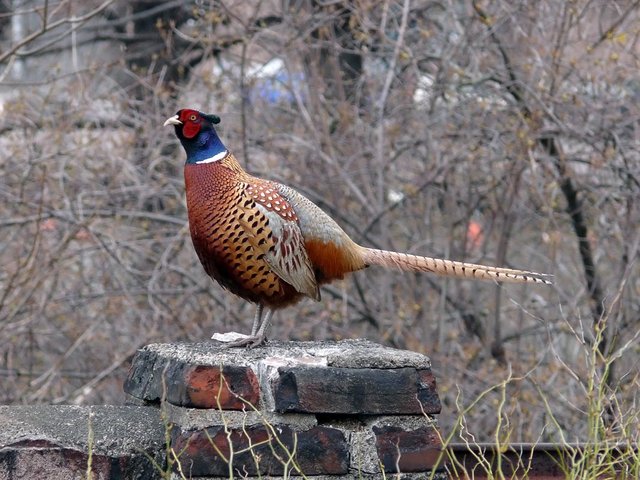
Source
Today Monday I will talk about the Pheasant: It is a terrestrial bird that has a shocking explosion of colors in its plumage, that depending on the race and the size, the colors will have tones; red, yellow, bottle green, blue and brown, which when merged form a spectacular colorful fan, making it a very elegant bird.


NOT, TO THE HUNT OF PHEASANT
NOT, TO THE HUNT OF PHEASANT
This bird is highly valued because it is considered an elite bird because of its high protein and nutritive levels, as well as its low fat and cholesterol index, it contains vitamins and minerals. The pheasant, a very beautiful bird, yes, but also one of the most succulent, is used in haute cuisine in restaurants and luxury hotels. The pheasants that are born and raised on farms, are no released, for their conservation, to avoid being the of desire and the aim of poachers.
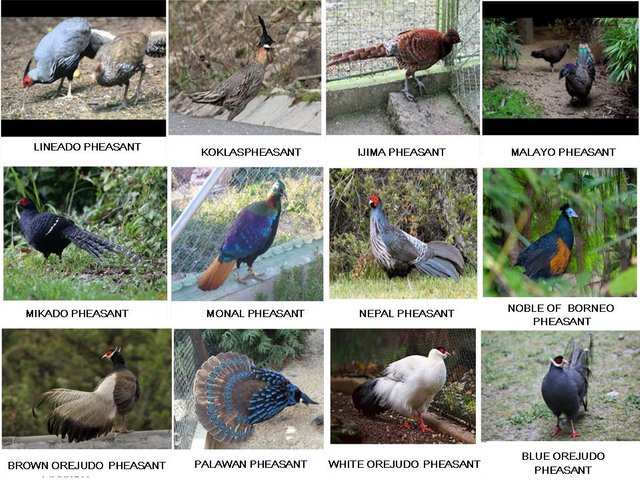
created by dulce85
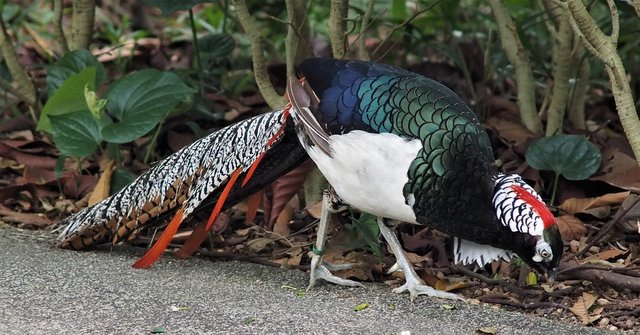
Source
TYPES OF PHEASANT
TYPES OF PHEASANT
The family of pheasants is extremely wide there are more than 40 species and with more than 100 subspecies, of which I will mention some of them:
| Yellow Pheasant | Argus Pheasant |
|---|---|
| Chinqui Pheasant | Pnk Tail Pheasant |
| Golden Pheasant | Common Pheasant |
| Cooper Pheasant | Sumatra Pheasant |
| Hume Pheasant | Germain Pheasant |
| Edwards Pheasant | Elliot's Pheasant |
| Linear Pheasant | Koklas Pheasant |
| Ijima Pheasant | Malay Pheasant |
| Mikado Pheasant | Monal Pheasant |
| Nepal Pheasant | Noble Faisan of Borneo Pheasant |
| Fawn Brown Ears Pheasant | Palawan Pheasant |
| Orejudo White Pheasant | Orejudo Blue Pheasant |
| Prelate Pheasant | Rotchschild's Pheasant |
| Silver Pheasant | Fawan Palawan White Eyebrow Pheasant |
| Tragopan by Cabot Pheasant | Tragopan Satyr Pheasant |
| Swinhoes Pheasant | Tragopan Temmincki Pheasant |
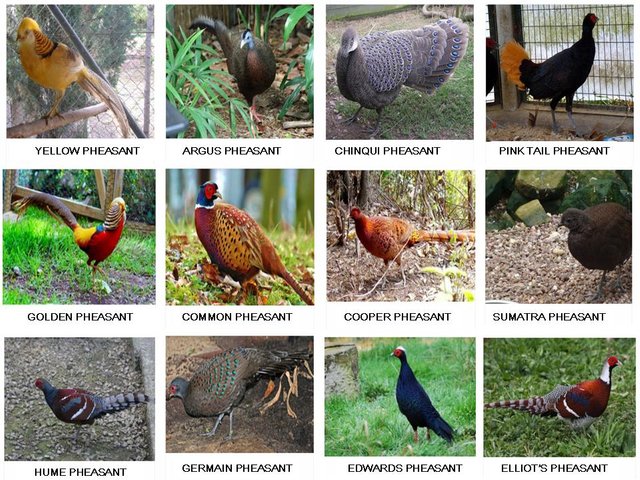

This bird gallinaceous, of the Phasianidae family of temperate Asia, is a terrestrial bird prefers running and walking, not to mention that they can also fly very short distances at an approximate speed of 40 to 60 kilometers per hour, but can significantly increase it when it feel threatened.

ORIGIN OF THE PHEASANT
ORIGIN OF THE PHEASANT
The pheasant is native to Asia, specifically from Borneo, Sumatra, Himalayas, south and west of China and the mountains of Formosa (Taiwan), reaching the Old Continent through the Greeks around the fifth century BC. Its scientific name is Phasianus Colchicu. The name phaisan is derived from the Greek word paisanos, which is derived from Phasis, a river located in Cólquida, an Asian region located on the west bank of the Black Sea, from where the common pheasant probably would have entered Europe.
WHERE THE PHEASANT LIVES?
WHERE THE PHEASANT LIVES?
Regarding the habitat, the pheasant lives in wooded areas with little vegetation or grasslands near ponds or lakes, mountains, forests, jungles, in short it can adapt to different habitats as long as they are rich in nature. When it is domesticated, there are many farms and zoos where they reproduce for the consumption and commercialization of their eggs, meat and feathers.
WHAT A PHEASANT EATS?
WHAT A PHEASANT EATS?
Pheasants are Omnivorous animals, and have a diet that can vary according to the species, some pheasants consume foods of vegetable origin, and some have a diet whose nutrients are obtained from an animal source. When they are in the wild they feed on what the environment offers them, mainly of all kinds of berries, herbs, fruits, seeds, plants, sprouts, insects or other invertebrates, these birds pecking in search of food, this process usually occurs in the morning very early and in the afternoon when the sun is already falling. When they are in a domestic state, they eat oatmeal-type cereals, corn, even rice grain, which provide good nutrition.
PHEASANT REPRODUCTION
PHEASANT REPRODUCTION
They build a nest on the land near cereal crops, which guarantee adequate food, security and temperature for the chicks. Then the pheasant daily puts an egg to get to 7 to 11 eggs approximately, which will be incubated for a period ranging from 22 to 24 days, until the day of birth and break the shell with the peak to get out. The life time of a pheasant is approximately 3 years.
PHEASANT CHARACTERISTICS
PHEASANT CHARACTERISTICS
- It is a terrestrial, daytime bird.
- It is oviparous: it can lay between 7 and 11 eggs.
- They have a surprising color.
- The male measures 90 cm and weighs 3 kg. Approximately.
- The female, measuring 60 cm and weighing 1.5 kg, approximately.
- It has a small rounded head very similar to that of chickens.
- The peak is arched and strong.
- They have a long thin tail.
- They eat nuts, as well as leaves, seeds as well as other birds, or rodents such as lizards and snakes.
- Fast flight, this bird reaches 10 meters high very quickly.
- They take shelter in the trees.
- It is closely linked with hunting.
THEME WEEK
Wednesday: Geese as a farm bird
Thursday: Rearing Turkeys
Friday: Chicken in poultries.
Saturday: Guinea fowl
Sunday: Ducks
Monday: Pheasant
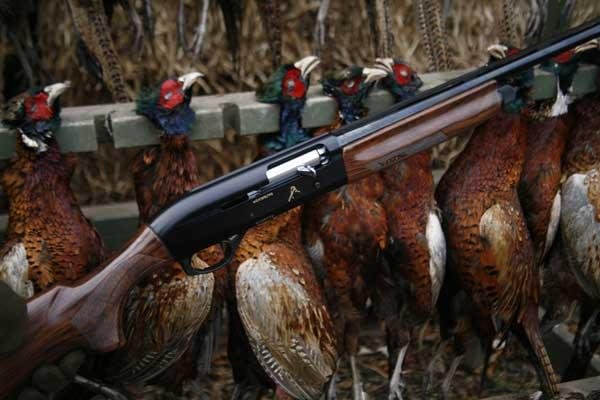

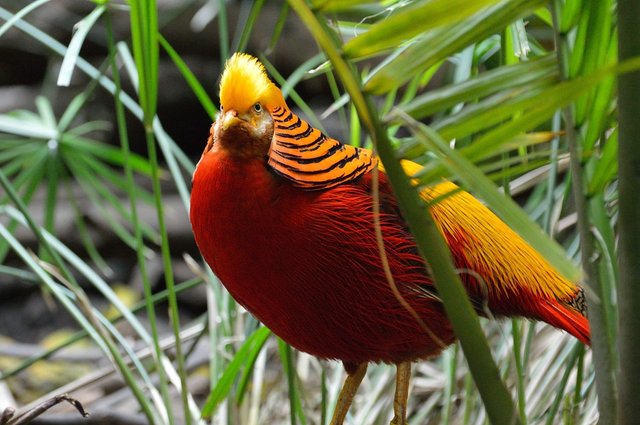

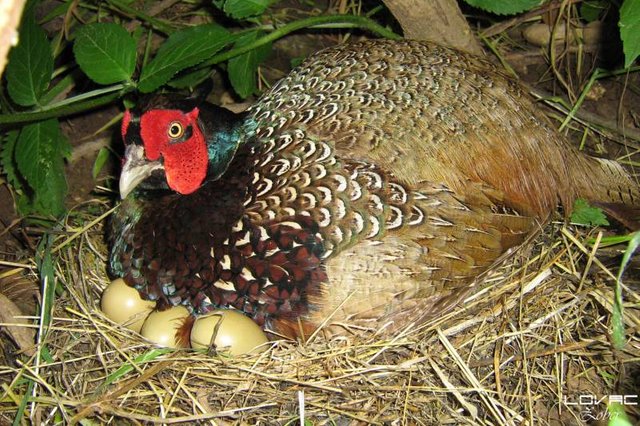
Congratulations @dulce85! You have completed the following achievement on Steemit and have been rewarded with new badge(s) :
Click on the badge to view your Board of Honor.
If you no longer want to receive notifications, reply to this comment with the word
STOP